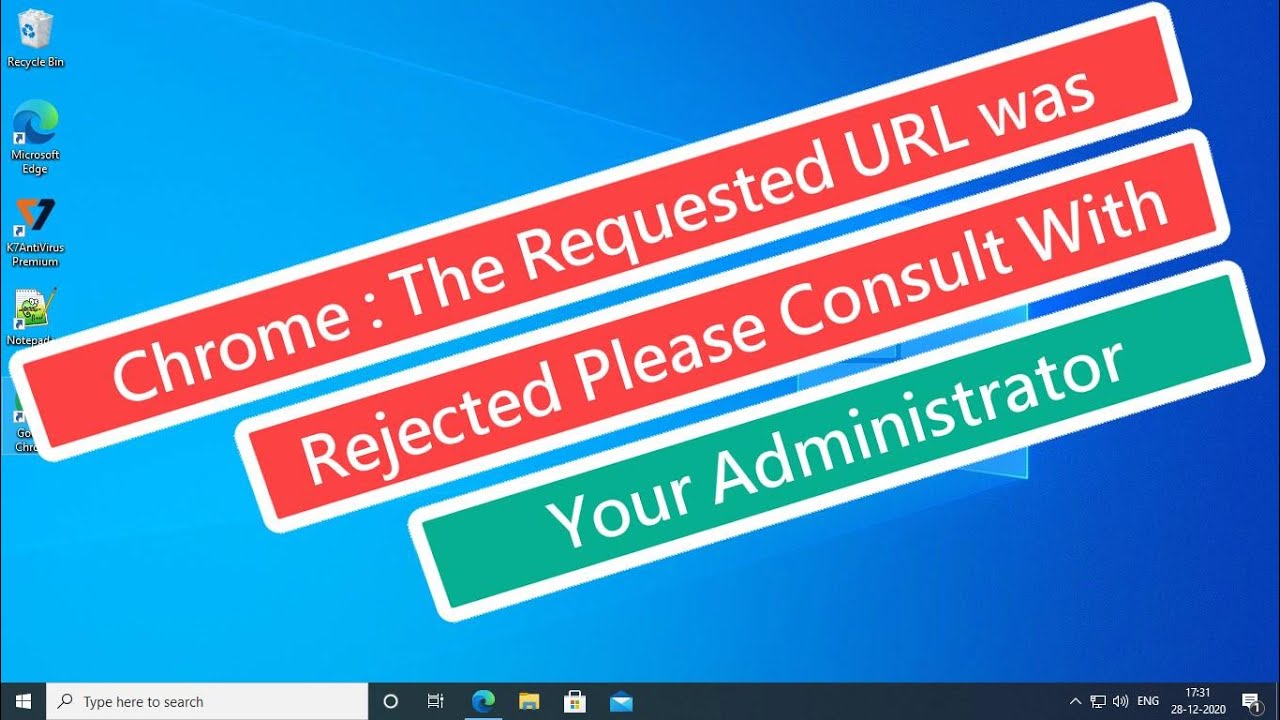If you’ve encountered the frustrating “The Requested URL Was Rejected. Please Consult With Your Administrator” error while trying to access a website, don’t worry – there are several solutions you can try to resolve this issue. This error message typically indicates a problem with your browser configuration, such as blocked cookies, DNS cache errors, or connection restrictions. In this comprehensive guide, we’ll walk you through various methods to fix the error and get back to browsing smoothly.
1. Restart Your Router
Sometimes, the simplest solutions can be the most effective. If you’re encountering the “The Requested URL Was Rejected” error, try restarting your router. This can help resolve any connection issues between your computer, router, and internet source. To restart your router, you can either press the Power button on the device or power off the router’s switch and then turn it back on. Alternatively, you can access your router’s settings page in your web browser and choose the “Restart The Router” option.
2. Enable Cookies in Your Web Browser
One common cause of the “The Requested URL Was Rejected” error is blocked cookies. Websites often require access to cookies stored in your browser to establish necessary connections and provide a seamless browsing experience. If you or someone else has disabled cookies in your browser, it can lead to this error. To fix this issue, you need to enable cookies in your web browser.
Google Chrome
- Launch Chrome and click on the three-dot menu in the top-right corner.
- Select “Settings” from the menu.
- In the settings page, find “Privacy and security” options in the left pane.
- Under “Privacy and security,” locate the “Cookies and other site data” option.
- Choose either “Allow all cookies” or “Block third-party cookies in Incognito” based on your preferences.
- Refresh the URL that triggered the error, and it should now load properly.
Mozilla Firefox
- Open Firefox and click on the three horizontal lines in the top-right corner.
- Select “Settings” from the menu.
- In the settings page, choose “Privacy & Security” from the left menu.
- Under the “Enhanced Tracking Protection” section, select “Standard” to allow all cookies.
- If you prefer a custom approach, choose “Custom” and enable “Cross-site tracking cookies” from the Cookies drop-down menu.
- Reload the URL that was previously rejected, and it should now work without issues.
Microsoft Edge
- Launch Edge and click on the three-dot menu in the top-right corner.
- Select “Settings” from the menu.
- In the settings page, choose “Cookies and site permissions” from the left menu.
- Under “Cookies and site data,” select “Manage and delete cookies and site data.”
- Enable the option “Allow sites to save and read cookie data (recommended).”
- Try accessing the problematic URL again, and the error should be resolved.
Apple Safari
- Open Safari and click on “Safari” in the menu bar.
- Select “Settings” from the drop-down menu.
- Go to the “Privacy” tab.
- Disable the “Block all cookies” option.
- Retry loading the URL, and it should no longer be rejected.
3. Delete Existing Cookies and Cache in Your Web Browser
Corrupt cookies stored in your browser can sometimes trigger the “The Requested URL Was Rejected” error. By deleting these cookies, you can prompt your browser to create fresh ones, potentially resolving the issue. However, keep in mind that deleting all cookies will require you to log in again to websites that rely on cookie data. Here’s how to delete cookies and cache in popular web browsers:
Google Chrome
- Open Chrome and type “chrome://settings/clearBrowserData” in the address bar.
- Select “All time” from the “Time range” drop-down menu.
- Check the boxes for “Cookies and other site data” and “Cached images and files.”
- Click “Clear data” at the bottom.
- Restart Chrome and revisit the URL to check if the error persists.
Mozilla Firefox
- Launch Firefox and enter “about:preferences#privacy” in the address bar.
- Scroll down to the “Cookies and Site Data” section and click on “Clear Data.”
- Enable both “Cookies and Site Data” and “Cached Web Content” options.
- Click “Clear” to delete the cookies and cache data.
- Relaunch Firefox and try accessing the URL again.
Microsoft Edge
- Open Edge and enter “edge://settings/clearBrowserData” in the address bar.
- Choose “All time” from the “Time range” drop-down menu.
- Select “Cookies and other site data” and “Cached images and files” options.
- Click “Clear now” to delete the data.
- Restart Edge and see if the error is resolved.
Apple Safari
- Launch Safari and go to “Safari” in the menu bar.
- Select “Settings” and go to the “Privacy” tab.
- Click on “Details” under “Remove All Website Data.”
- Select the problematic site from the list.
- Click “Remove” and then “Done.”
- Reload the URL, and the error should no longer appear.
4. Flush Your Windows or Mac’s DNS Cache
Your computer stores DNS cache to quickly convert domain names into IP addresses, facilitating faster browsing. However, a corrupt DNS cache can prevent your browsers and other apps from connecting to websites, leading to the “The Requested URL Was Rejected” error. Flushing the DNS cache can resolve this issue, and the cache will be automatically rebuilt as you browse the web.
On Windows
- Open the Start menu and search for “Command Prompt.”
- Launch Command Prompt with Administrator access.
- Type the command “ipconfig /flushdns” and press Enter.
- Allow the command to run and complete.
- Restart your computer or reconnect to the internet source.
- Try loading the website again, and the error should be resolved.
On Mac
- Press Command + Spacebar, type “Terminal,” and select the Terminal app.
- Enter the command “sudo dscacheutil -flushcache; sudo killall -HUP mDNSResponder” and press Enter.
- Enter your account password when prompted and press Enter.
- Your Mac’s DNS cache will be cleared.
- Restart your Mac and try accessing the URL again.
5. Delete Your Web Browser’s DNS Cache
Similar to your computer, your web browser also stores DNS cache to improve website access speed. Clearing this cache can help resolve the “The Requested URL Was Rejected” error. Here’s how to clear DNS cache in popular web browsers:
Google Chrome
- Access the following page in Chrome: “chrome://net-internals/#dns.”
- Click on the “Clear host cache” button.
- Restart Chrome and check if the error persists.
Mozilla Firefox
- Open the following link in Firefox: “about:networking#dns.”
- Click on the “Clear DNS Cache” button.
- Relaunch Firefox and see if the error is resolved.
Microsoft Edge
- Go to the following page in Edge: “edge://net-internals/#dns.”
- Click on the “Clear host cache” option.
- Restart Edge and check if the error is resolved.
Apple Safari
- Open Safari and go to Safari > Settings > Advanced.
- Enable the “Show Develop menu in menu bar” option.
- Click on “Develop” in the menu bar and select “Empty Caches.”
- Relaunch Safari and try accessing the URL again.
6. Turn Off Your Web Browser’s Extensions
Extensions in your web browser can enhance your browsing experience, but sometimes, a faulty extension can cause issues like the “The Requested URL Was Rejected” error. By temporarily disabling all extensions, you can determine if any of them are causing the problem. Here’s how to turn off extensions in popular web browsers:
Google Chrome
- Click on the three-dot menu in Chrome’s top-right corner and select “More tools” > “Extensions.”
- Disable the toggle switch for all installed extensions.
- Reload the URL and check if the error is resolved.
- If the error is gone, re-enable one extension at a time to identify the problematic one.
Mozilla Firefox
- Click on the three horizontal lines in Firefox’s top-right corner and choose “Add-ons and themes.”
- Disable all the listed add-ons.
- Try accessing the URL again to see if the error persists.
- If the error is resolved, enable one add-on at a time to identify the problematic one.
Microsoft Edge
- Click on the three-dot menu in Edge’s top-right corner and select “Extensions.”
- Choose “Manage extensions” and deactivate all installed extensions.
- Reload the URL and check if the error is resolved.
- If the error no longer appears, re-enable extensions one by one to find the culprit.
Apple Safari
- Open Safari and go to Safari > Settings > Extensions.
- Deselect all the extensions to turn them off.
- Retry accessing the URL and see if the error is resolved.
- Enable the extensions one by one to identify any problematic ones.
7. Add Your Site to Your PC’s Trusted Sites List
Sometimes, your Windows PC may be restricting access to a website due to security concerns. By adding the site’s URL to your system’s trusted sites list, you can bypass these restrictions and resolve the “The Requested URL Was Rejected” error. Here’s how to add a site to the trusted sites list:
- Launch the Control Panel and select “Network and Internet” followed by “Internet Options.”
- Access the “Security” tab and choose “Trusted sites.”
- Click on the “Sites” button.
- Enter the URL of the website you’re trying to access and click “Add.”
- Save the changes and restart your web browser.
- The error should be resolved, allowing you to access the website.
8. Remove Your Site From Your PC’s Managed Sites List
In some cases, your Windows PC may have added a website to the managed sites list, preventing it from placing cookies in your web browser. To resolve the “The Requested URL Was Rejected” error, you’ll need to remove your site from this list. Here’s how:
- Go to Control Panel > Network and Internet > Internet Options.
- Access the “Privacy” tab and click on “Sites.”
- Look for your site on the list and select it.
- Click on “Remove” and then “OK.”
- Restart your web browser and try accessing the URL again.
- The error should no longer appear.
9. Update Your Web Browser
Outdated web browsers can sometimes cause compatibility issues, leading to errors like “The Requested URL Was Rejected.” Updating your browser to the latest version can resolve these compatibility issues and improve overall performance. Here’s how to update popular web browsers:
Google Chrome
- Launch Chrome and click on the three-dot menu in the top-right corner.
- Select “Settings” from the menu.
- In the settings page, choose “About Chrome” from the left pane.
- Chrome will automatically check for updates and install them if available.
- Restart Chrome to apply the updates.
Mozilla Firefox
- Open Firefox and click on the three horizontal lines in the top-right corner.
- Select “Help” from the menu and choose “About Firefox.”
- Firefox will check for updates and install them if available.
- Restart Firefox to complete the update process.
Microsoft Edge
- Launch Edge and click on the three-dot menu in the top-right corner.
- Select “Settings” from the menu.
- In the settings page, choose “About Microsoft Edge” from the left pane.
- Edge will check for updates and install them if available.
- Restart Edge to finish the update.
Apple Safari
- Open the App Store on your Mac.
- Click on the “Updates” tab in the top menu bar.
- If a Safari update is available, click on the “Update” button next to it.
- Wait for the update to download and install.
- Restart Safari to complete the update process.
10. Get Rid of the URL Rejected Error From Your Web Browser
After following the above methods, you should be able to resolve the “The Requested URL Was Rejected” error in your web browser. However, if you’re still encountering the error, here are a few additional troubleshooting steps you can try:
- Disconnect and reconnect your internet connection.
- Reset your web browser to its default factory settings.
- Remove any third-party extensions you may have installed.
- Update your operating system to the latest version.
- Contact your network administrator for further assistance.
Conclusion
By following these steps, you should be able to overcome the “The Requested URL Was Rejected” error and browse websites without any hindrance. If you have any other questions or encounter any difficulties during the troubleshooting process, don’t hesitate to reach out for further assistance. Happy browsing!
Experiencing difficulties with your Device, check out our “How To” page on how to resolve some of these issues.







